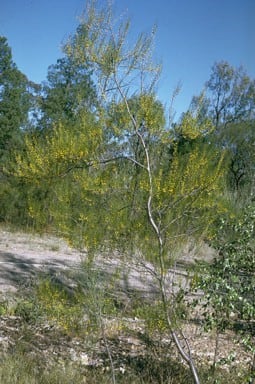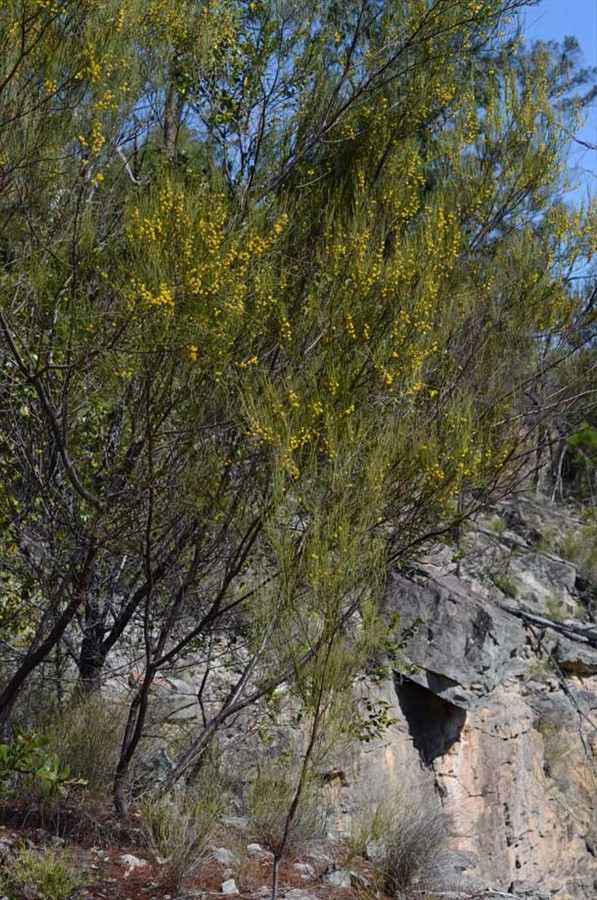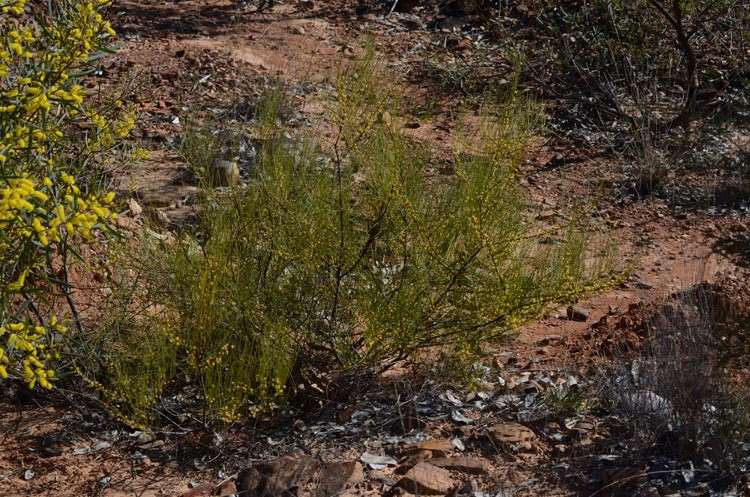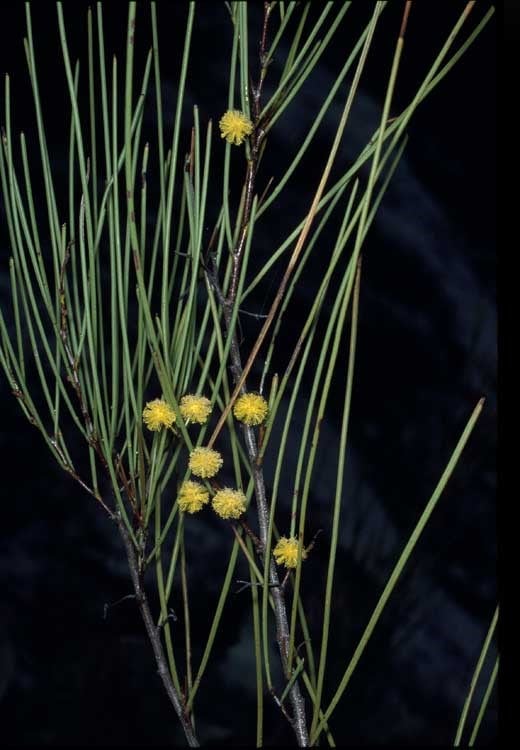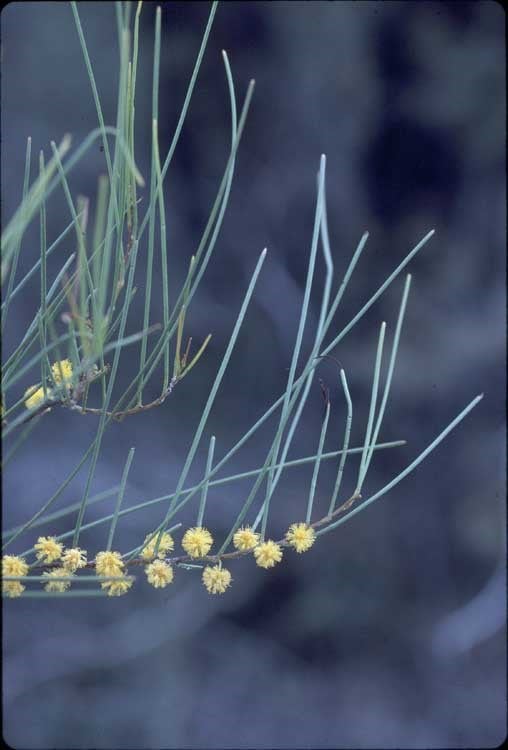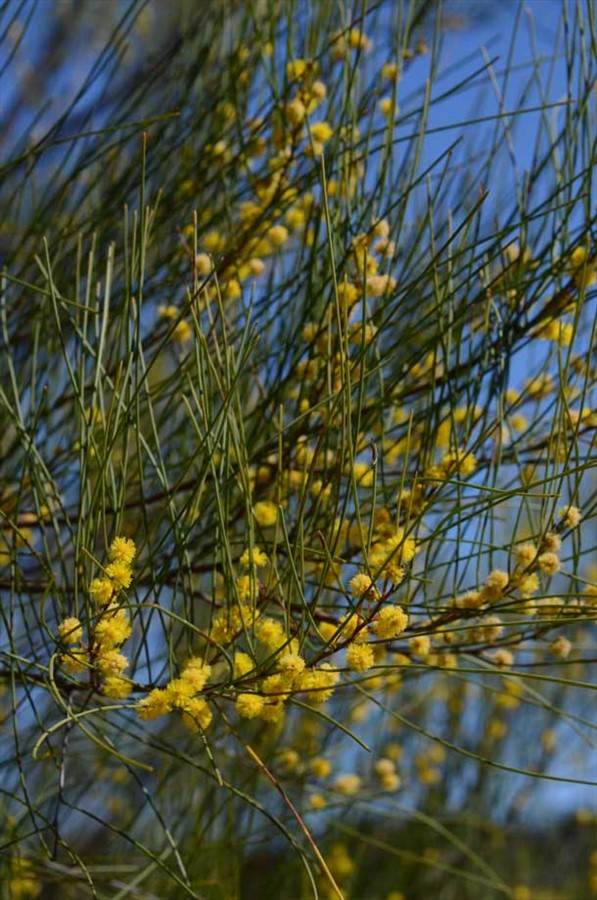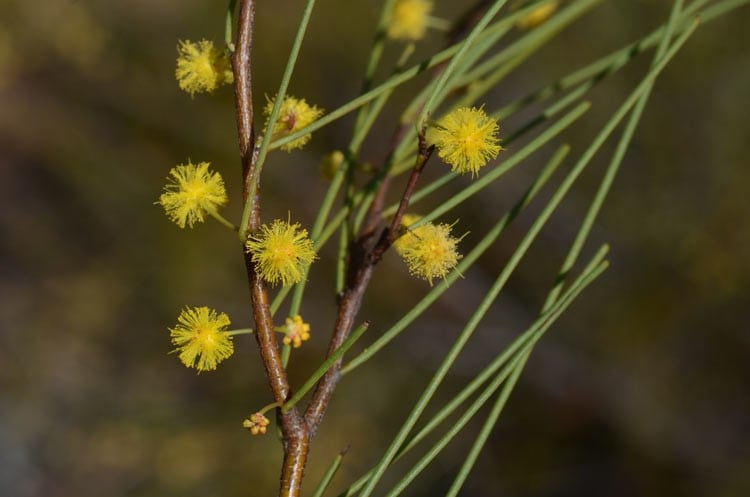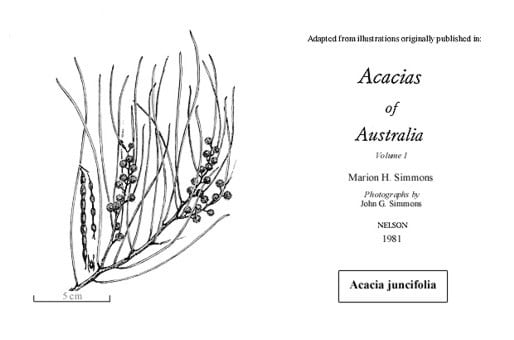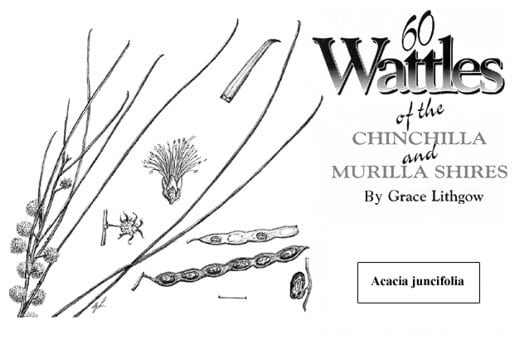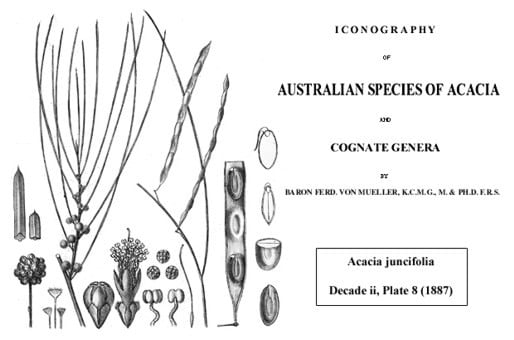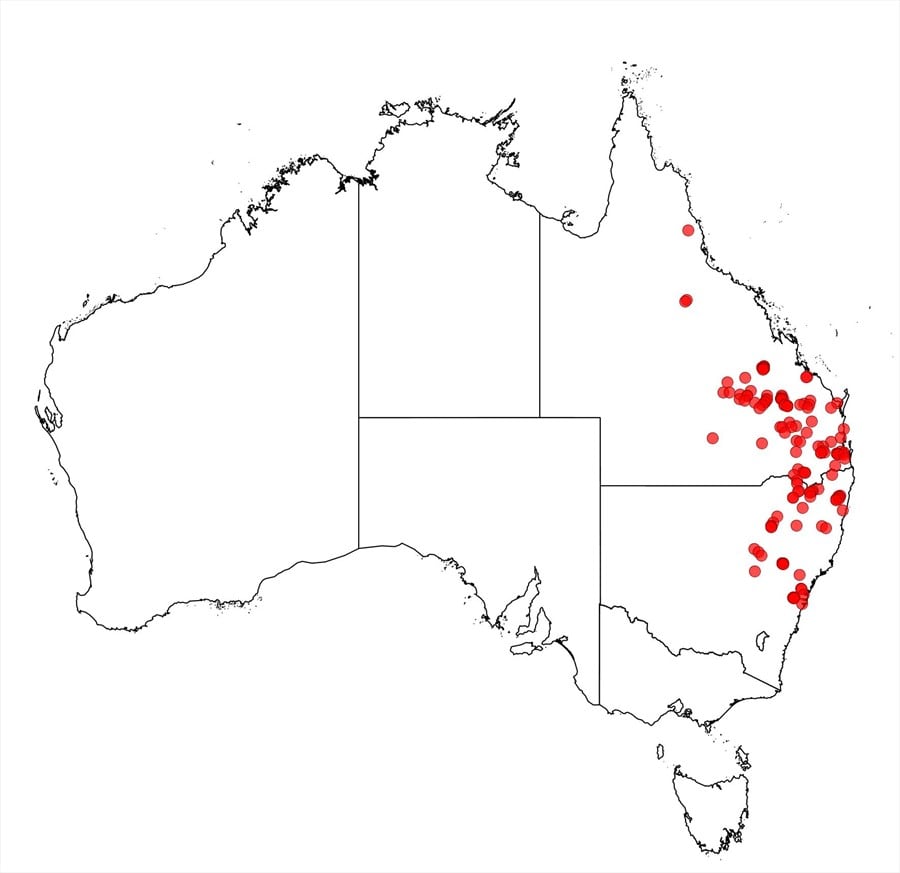Acacia juncifolia Benth.
WATTLE
Acacias of Australia
Common Name
Rush-leaf Wattle
Family
Fabaceae
Distribution
Widespread but nowhere common from Port Clinton [formerly Port Bowen] Qld, S to the Glenbrook area, c. 50 km W of Sydney, N.S.W.; extends inland for a maximum of 550 km.
Description
Somewhat spindly shrub to c. 3 m high. Branchlets slender, lenticellular, dark reddish brown, glabrous. Phyllodes filiform, ascending to erect, straight to shallowly incurved, terete to subquadrangular or flat, 7–20 cm long, c. 1 mm wide, not rigid, acute, with mucro indurate but not sharply pungent, finely longitudinally sulcate when dry, glabrous; rather obscurely 4-nerved in all, 1-nerved per face when flat with midrib slightly raised when dry; gland 2–8 mm above pulvinus; pulvinus 1–2 mm long. Inflorescences simple and (fewer) rudimentary 1‑headed racemes with axes 1–2 mm long intermixed, usually 1–2 per axil; peduncles 4–12 mm long, glabrous; basal bract persistent; heads globular, 20–30-flowered, pale yellow to deep buttercup yellow. Flowers 5-merous; sepals free, linear-spathulate. Pods prominently raised over seeds and slightly to moderately constricted between them, to 10 cm long, 3–4 mm wide, firmly chartaceous to thinly coriaceous, dark red-brown, glabrous. Seeds longitudinal, oblong-elliptic, 3.5–4.5 mm long, dull, mottled black and yellow, ±exarillate.
Habitat
Grows in shallow sand derived from sandstone or less commonly from granite, in Eucalyptus forest or woodland; in coastal areas it occurs in deep sand in heath. The ‘N. Australia’ specimens cited under A. juncifolia by G.Bentham, Fl. Austral. 2: 339 (1864), are A. alleniana.
Specimens
Qld: Blackdown Tableland, I.B.Armitage 1399 (PERTH); Nathan Gorge, 19.2 km SSW of Cracow, N.H.Speck 1928 (PERTH). N.S.W.: Lee’s Pinch, 16 Sept. 1948, E.F.Constable s.n. (NSW, PERTH); 9.6 km SW of Coaldale by road to Copmanhurst, R.Coveny 2197 (NSW, PERTH).
Notes
Flat phyllode forms of A. juncifolia in Qld can be confused with A. dietrichiana. These two species are sympatric on the northern edge of the Blackdown Tableland but A. dietrichana has broader phyllodes and viscid branchlets which are, at least at their apices, vernicose when dry. In A. juncifolia the branchlets are normally non-viscid and dull when dry.
Acacia juncifolia, A. alleniana, A. dietrichiana, A. jasperensis and A. quadrilateralis are related by the following characters: sepals mostly free, funicle filiform and scarcely expanded into an aril or exarillate, inflorescences simple or minutely racemose, peduncles with a single, persistent basal bract, phyllodes usually very long and narrow. This ‘A. juncifolia group’ appears related to the ‘A. murrayana group’ whose species are distinguished by their longer racemes and phyllodes with gland-bearing apices. Acacia calantha herbarium specimens have sometimes been misidentified as A. juncifolia.
Acacia juncifolia subsp. serpentinicola was recognized by B.R.Maslin, Fl. Australia 11A: 369–370 (2001) but is now treated as a distinct species, A. serpentinicola.
FOA Reference
Data derived from Flora of Australia Volumes 11A (2001), 11B (2001) and 12 (1998), products of ABRS, ©Commonwealth of Australia
Author
B.R.Maslin
Revised by B.R.Maslin
This identification key and fact sheets are available as a mobile application:
URL: https://apps.lucidcentral.org/wattle/
© Copyright 2018. All rights reserved.

